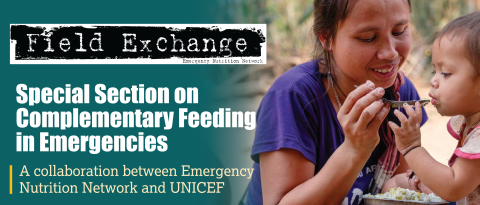Regional Perspective: Europe and Central Asia (ECA)
This article presents a summary of the findings of the ECA Regional Office (ECARO) landscape analysis report (UNICEF, 2020), drafted by the Emergency Nutrition Network (ENN) with support from UNICEF partners, notably the Regional Health Advisor for ECARO.
There has been substantial progress in reducing childhood malnutrition in Central Asia. Between 2010 and 2020, the prevalence of stunting in children under the age of five reduced from 17.1% to 10.0% and overweight reduced from 9.5% to 5.6% (UNICEF, WHO, & World Bank, 2021). Rates of exclusive breastfeeding also increased to 44.5% (UNICEF, 2021). However, there are disparities across the broader ECA region. For example, in the Eastern Europe sub-region, although the estimated prevalence of overweight and obesity has reduced from 11.9% to 9.9%, it still ranks as the region with the fourth highest global rates (UNICEF, WHO, & World Bank, 2021).
The ECARO landscape analysis was conducted in six countries, across three sub-regions: Bosnia and Herzegovina and Serbia (Balkan), Armenia and Georgia (Caucasus) and Kazakhstan and Tajikistan (Central Asia). Methods included a comprehensive review of literature and policies, an analysis of national level survey data and in-depth qualitative interviews with key informants.
Contrary to other global regions, key informants did not perceive that the availability, access and affordability of foods affected the quality of young children’s diets in the Balkans and the Caucasus. However, in Central Asia, complementary feeding was hampered by seasonal fluctuations in agriculture and incomes. In the same area, access to adequate foods was reported as an issue for the poorest families.
The ready availability of processed foods in the Balkans, the Caucasus and Central Asia has progressed, threatening the capability of families to feed nutrient-rich foods to their young children. In the Balkans, processed foods were considered a convenient option for parents. However, they remain prohibitively expensive for many families in Caucasus countries, who may instead opt for local homemade foods. In Central Asia, the cost of nutrient dense foods was prohibitive, resulting in two-thirds of respondents being unable to routinely afford foods such as meat, fruits and vegetables.
Both complementary feeding counselling quality and roll-out through primary care are weak across the ECA region, but adequate WASH was not considered a barrier to complementary feeding. No country in the region had designated social protection policies targeting the improvement of children’s diets in food-insecure or poverty-affected households.
The introduction of foods before the age of six months, the use of infant formula and the perceived inadequacy of breastmilk were common beliefs in Balkan countries, affecting exclusive breastfeeding and effective complementary feeding practices. There was a lack of data regarding this aspect for Central Asia and Caucasus countries. Despite some regulations on advertising infant formula or follow-on formula in the Balkans and the Caucasus, the marketing of formula milk on television is still a reality and the availability of infant formulas in health facilities is widespread. Food taboos and myths – related to allergies, foodborne illnesses or, in Central Asia, language learning – influence diets across the region, although there was a lack of data from Caucasus countries. In Balkan countries, the return of mothers to work was identified as a limiting factor to the time available for preparing food for young children, whereas household chores and responsibility for agricultural production were factors limiting preparation time in Central Asia. There were no data from Caucasus countries on caregiver time.
Recommendations and next steps
Although individual recommendations have been developed for each sub-region, the landscape analysis made five overall recommendations for improving young children’s diets in the region: 1) the development of national food-based dietary guidelines, including guidance on feeding young children according to global standards; 2) the need to strengthen the quality and delivery of counselling services for breastfeeding and complementary feeding; 3) the need to update laws prohibiting the promotion of breastmilk substitutes and regulating the marketing of foods for infants and young children (still a consistent problem across global regions); 4) the integration of complementary feeding indicators into health monitoring systems; and 5) the development of social protection policies targeting vulnerable families.
For more information, please contact Gabriele Fontana at gfontana@unicef.org
References
UNICEF (2021) 2021 Global Databases: Infant and Young Child Feeding. United Nations Children’s Fund https://data.unicef.org/topic/nutrition/infant-and-young-child-feeding/
UNICEF ECARO (2020) Overview of the Complementary Feeding and Diets of Young Children in Europe and Central Asia Region. UNICEF ECARO https://www.unicef.org/eca/reports/overview-complementary-feeding-and-diets-young-children-europe-and-central-asia
UNICEF, WHO, & World Bank (2021) Joint Malnutrition Estimates 2021. UNICEF, WHO, & World Bank https://data.unicef.org/resources/jme-report-2021/


